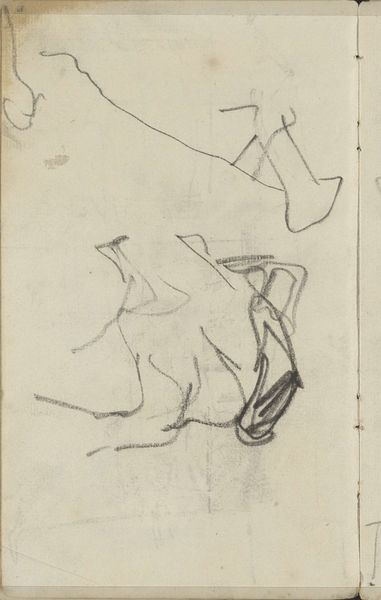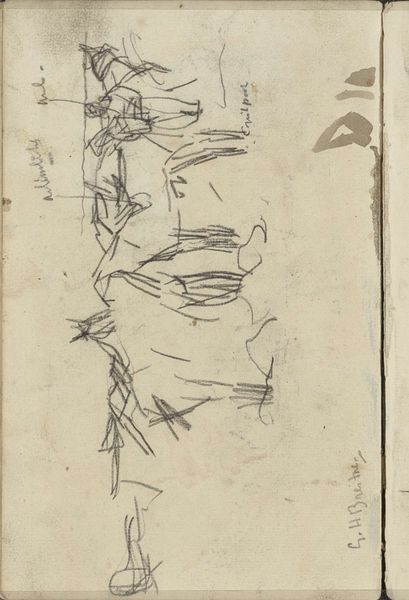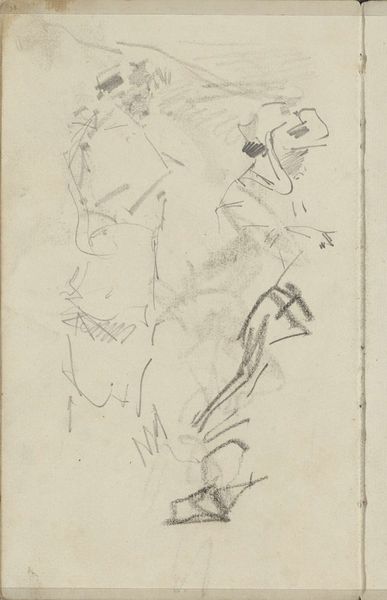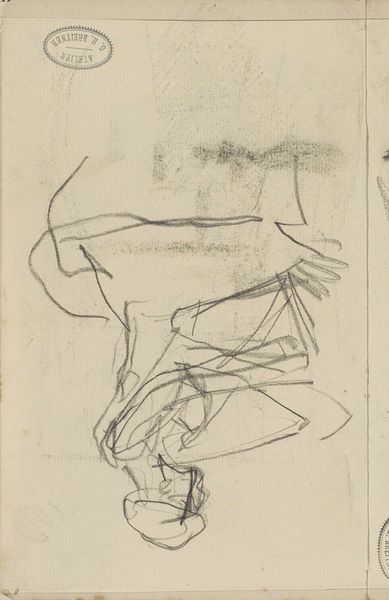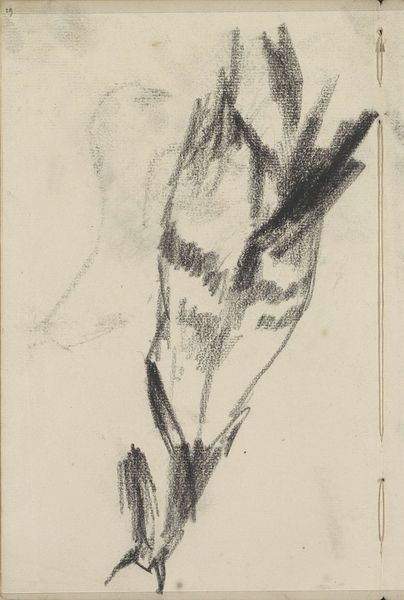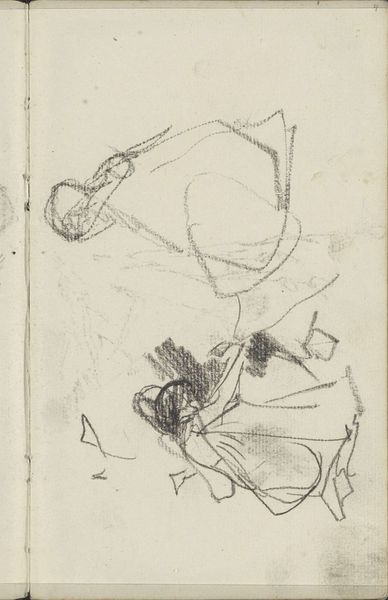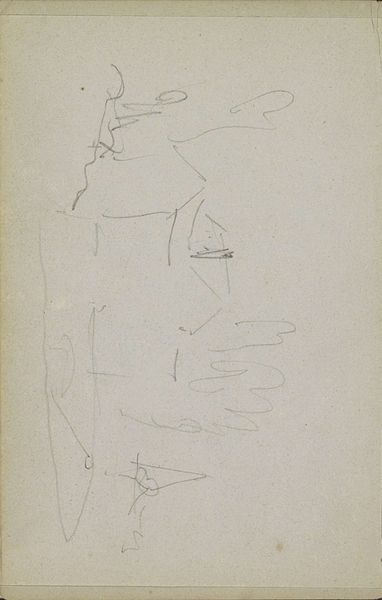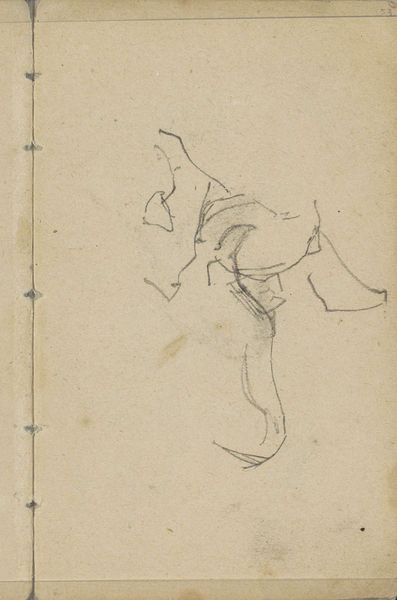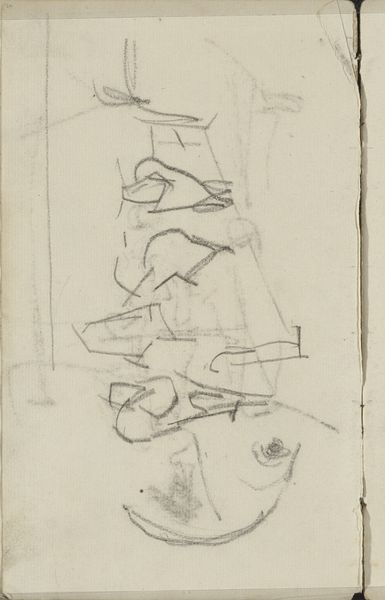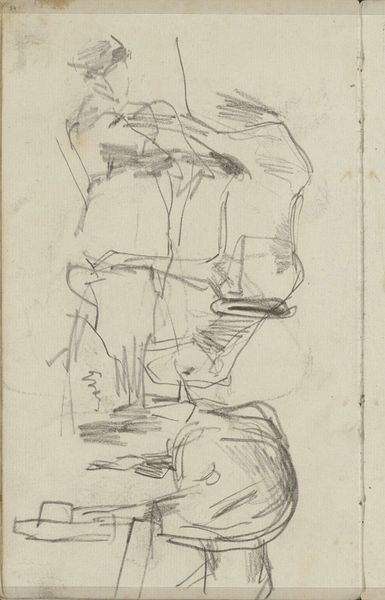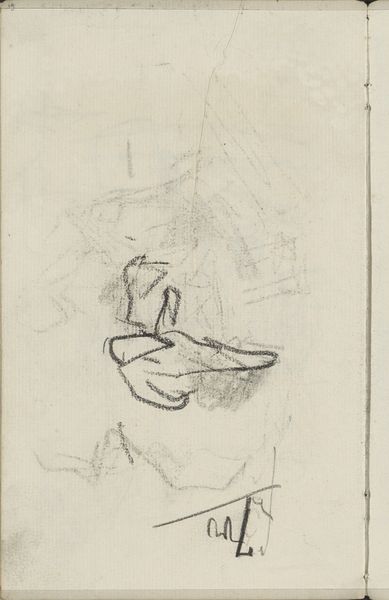
Vier meisjes die elkaars hand vasthouden, mogelijk dansend c. 1886 - 1898
0:00
0:00
Copyright: Rijks Museum: Open Domain
Editor: So, this is George Hendrik Breitner's charcoal drawing, "Four Girls Holding Hands, Possibly Dancing," from around 1886 to 1898. It's at the Rijksmuseum. The sketchiness gives it such a sense of movement, almost like a blurred photograph. How do you interpret this work, seeing beyond just the impressionistic style? Curator: I see it as a poignant snapshot of female bonding and the subtle forms of resistance within the confines of late 19th-century societal norms. These women, connected physically and perhaps emotionally, become a unit, momentarily escaping the isolating expectations placed upon them. What do you make of the negative space, the parts that Breitner *doesn’t* draw? Editor: That's interesting. I hadn't considered it as resistance. The negative space… it does leave so much to the imagination, almost like the details of their lives are deliberately obscured, leaving only this act of solidarity visible. So you see their connection as more than just… sisterhood? Curator: I think it prompts us to question what "sisterhood" even meant then. What social pressures were they under? How might holding hands, a seemingly innocuous act, become an expression of agency, a claiming of space and connection in a world that sought to limit both? Consider the lack of detail—does it universalize their experience, or erase their individual identities? Editor: That’s a powerful thought. I was focusing on the art style, but understanding the societal pressures they faced adds so many layers. It becomes a quiet rebellion in a way. Curator: Exactly. It highlights how everyday actions can carry significant weight when viewed through the lens of social and political context. And that's something we can apply to art – and life – today. Editor: Definitely given me a fresh perspective! I’ll never look at an impressionistic drawing the same way again!
Comments
No comments
Be the first to comment and join the conversation on the ultimate creative platform.
